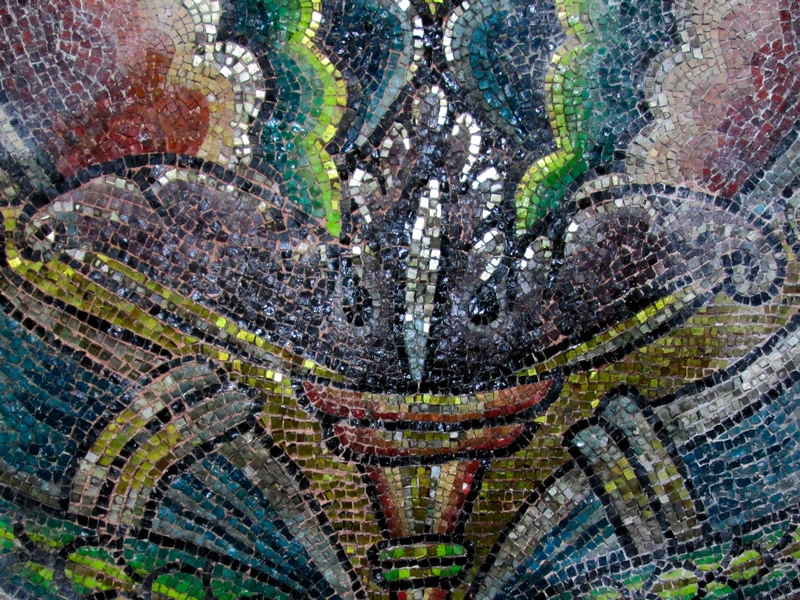Aside from Norman Sicily, between the ninth and the thirteenth centuries, the surviving evidence for the use of wall mosaics in Islamic monuments comes from Jerusalem. The Fatimid Caliph al-Zahir , period 1021-1036, embellished the mihrab dome of the Aqsa mosque with vegetal mosaics inspired by Umayyad prototypes as part of an extensive restoration of the mosque. After the Ayyubid reconquest of the city in 1187, the main mihrab was provided with inscriptions executed in white, green, black, and gold mosaics and set against a pearl-studded scrolling acanthus. The interior of the mihrab was filled with a network of interlocking circles filled with pendant bunches of grapes comprised of mother of pear
In 1994, on UNESCO commission, the CCA, il Centro di Conservazione Archeologica, was asked to carry out a study on the condition of the mosaic surfaces in order to decide a project for their conservation. In the course of the inspection, original fragments detached from the Al Aqsa mosque were also found in storage. As early as 1956, Cesare Brandi also visited the site for UNESCO to examine the condition of the surfaces, and he indicated that a high priority was the consolidation of the mosaics, which had been damaged over the centuries by water infiltrations and misguided restoration treatments. The CCA's conservation program stressed the need to study and document the surfaces in order to distinguish the non-original parts, and also took into account the methodological indications supplied by Brandi with regard to cleaning systems, consolidation in situ and integration of missing parts with recognizable and reversible systems.
It has been asked to Artefact Mosaic Studio to participate at the project for the reconstitution of the missing parts, elimination of some ungainly past restoration.




